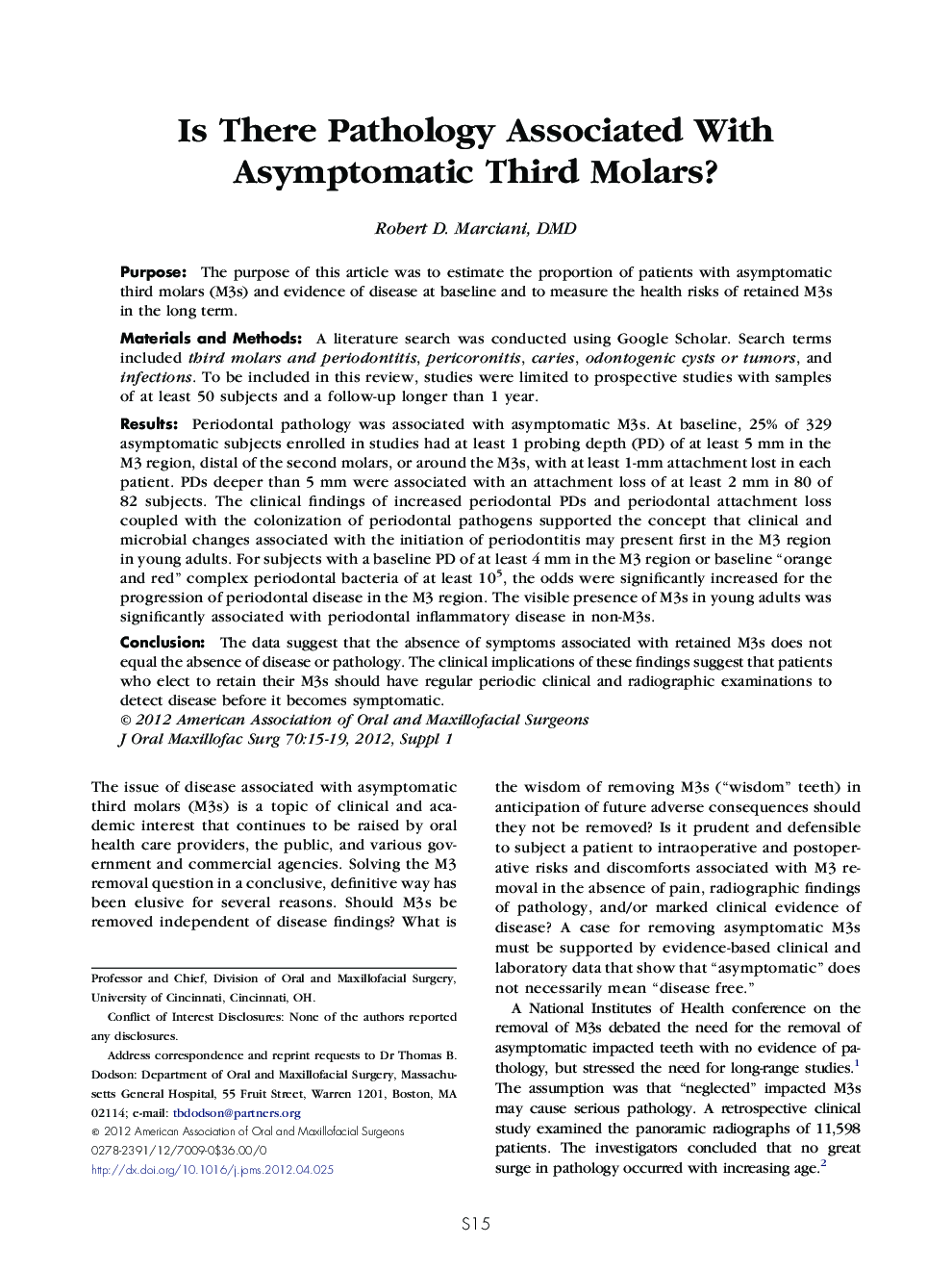| Article ID | Journal | Published Year | Pages | File Type |
|---|---|---|---|---|
| 3152876 | Journal of Oral and Maxillofacial Surgery | 2012 | 5 Pages |
PurposeThe purpose of this article was to estimate the proportion of patients with asymptomatic third molars (M3s) and evidence of disease at baseline and to measure the health risks of retained M3s in the long term.Materials and MethodsA literature search was conducted using Google Scholar. Search terms included third molars and periodontitis, pericoronitis, caries, odontogenic cysts or tumors, and infections. To be included in this review, studies were limited to prospective studies with samples of at least 50 subjects and a follow-up longer than 1 year.ResultsPeriodontal pathology was associated with asymptomatic M3s. At baseline, 25% of 329 asymptomatic subjects enrolled in studies had at least 1 probing depth (PD) of at least 5 mm in the M3 region, distal of the second molars, or around the M3s, with at least 1-mm attachment lost in each patient. PDs deeper than 5 mm were associated with an attachment loss of at least 2 mm in 80 of 82 subjects. The clinical findings of increased periodontal PDs and periodontal attachment loss coupled with the colonization of periodontal pathogens supported the concept that clinical and microbial changes associated with the initiation of periodontitis may present first in the M3 region in young adults. For subjects with a baseline PD of at least 4 mm in the M3 region or baseline “orange and red” complex periodontal bacteria of at least 105, the odds were significantly increased for the progression of periodontal disease in the M3 region. The visible presence of M3s in young adults was significantly associated with periodontal inflammatory disease in non-M3s.ConclusionThe data suggest that the absence of symptoms associated with retained M3s does not equal the absence of disease or pathology. The clinical implications of these findings suggest that patients who elect to retain their M3s should have regular periodic clinical and radiographic examinations to detect disease before it becomes symptomatic.
